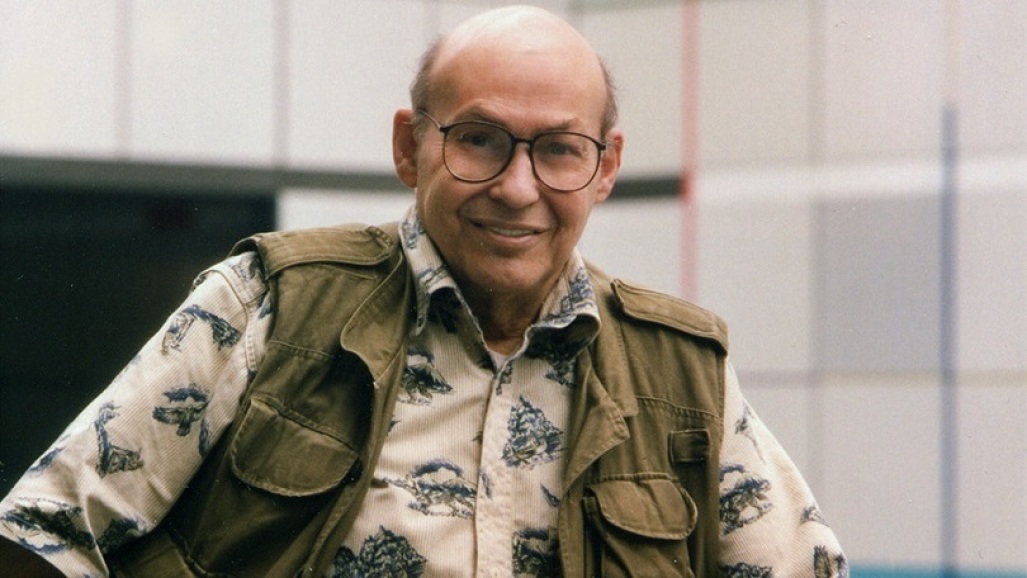
by Admin | Mar 5, 2021 | Chronicles, News
This week in The History of AI at AIWS.net – in 1970 Marvin Minsky was quoted in Life magazine, “In from three to eight years we will have a machine with the general intelligence of an average human being.”
Marvin Minsky was interviewed by Life magazine in 1970 by journalist Brad Darrach, who was writing an article on Shakey the Dog, an early mobile robot built at Stanford. Minsky made this bold claim, and further added on that “If we’re lucky, they might decide to keep us as pets.” This statement was meant as a warning to not let intelligence computers control vital systems.
Marvin Minksy was an important pioneer in the field of AI. He penned the research proposal for the Dartmouth Conference, which coined the term “Artificial Intelligence”, and he was a participant in it when it was hosted the next summer. Minsky would also co-founded the MIT AI labs, which went through different names, and the MIT Media Laboratory. In terms of popular culture, he was an adviser to Stanley Kubrick’s acclaimed movie 2001: A Space Odyssey. He won the Turing Award for his influence on AI in 1969.
Marvin Minsky’s quote and this interview highlighted the popularity and mainstream attention AI have received in the ‘60s and ‘70s. Furthermore, Marvin Minsky was one, if not the, most important figure in the development of Artificial Intelligence. His writings and sayings during the rise of AI in the 60s are still deliberated about to this day.
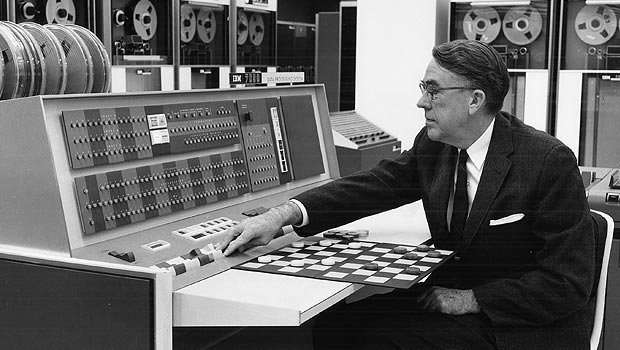
by Admin | Feb 26, 2021 | Chronicles, News
This week in The History of AI at AIWS.net – Arthur Samuel popularises the term “machine learning” in 1959 in his article “Some Studies in Machine Learning Using the Game of Checkers”.
Arthur L. Samuel was an American computer scientist. He was a pioneer in the field of computer gaming and artificial intelligence. Born in 1901, he studied at the College of Emporia for his Bachelor and MIT for his Master. His Samuel Checkers-playing Program was one of the first successful self-learning programs and was a basis for this article that coined “machine learning”. He was notable for his works at IBM and Stanford. Samuel won the Computer Pioneer Award in 1987 for his contributions to computer science and AI. He passed away in 1990.
“Machine learning” is the study of computers that can self-improve through time and experience. It is often considered a part in the development of artificial intelligence. Although the study has existed before 1959, with this program and also developments such as the Dartmouth Conference, helped the field become more active. A subset of machine learning, deep learning, has also been gaining traction lately.
The article that he wrote on this program and “machine learning” can be read and downloaded here.
This is important to the history of AI in that it popularises the term “machine learning”, which is an important aspect of artificial intelligence. Arthur Samuel is also one of the pioneers in computer science and AI.
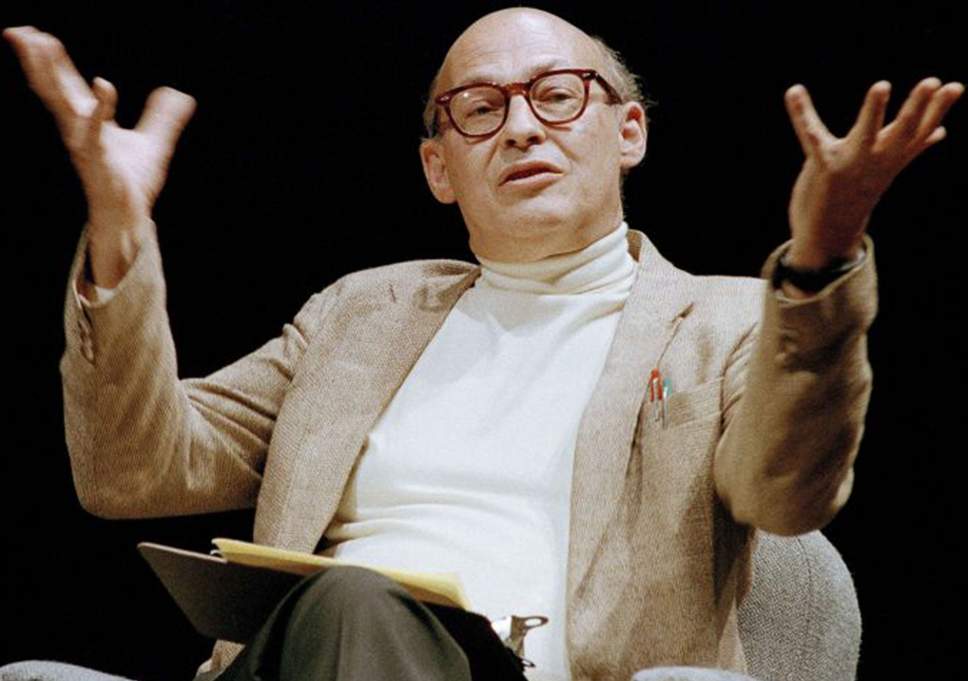
by Admin | Feb 19, 2021 | Chronicles, News
This week in The History of AI at AIWS.net – in 1967 Marvin Minsky was quoted saying, “Within a generation … the problem of creating ‘artificial intelligence’ will substantially be solved.”
Similar to H. A. Simon’s writings from the same era, Minsky’s prediction was stated in his work in the 60s, after the bloom of AI development in the advent of the Dartmouth Conference. Optimism was running high, and advocates and academics for AI envisioned a romantic vision of what it could be. However, his prediction did not come to fruition, as AI development suffered stagnations and the like, most notably the first AI Winter, whose beginnings ironically was contributed to by Minsky himself.
Marvin Minksy was an important pioneer in the field of AI. He penned the research proposal for the Dartmouth Conference, which coined the term “Artificial Intelligence”, and he was a participant in it when it was hosted the next summer. Minsky would also co-founded the MIT AI labs, which went through different names, and the MIT Media Laboratory. In terms of popular culture, he was an adviser to Stanley Kubrick’s acclaimed movie 2001: A Space Odyssey. He won the Turing Award for his impact on AI in 1969.
As with Herbert Simon, this quote was an event in the history of AI due to its display of the sentiments of optimism of the time. Furthermore, Marvin Minsky was one, if not the, most important figure in the development of Artificial Intelligence. His predictions about AI during its rise in the 60s are still discussed about to this day.
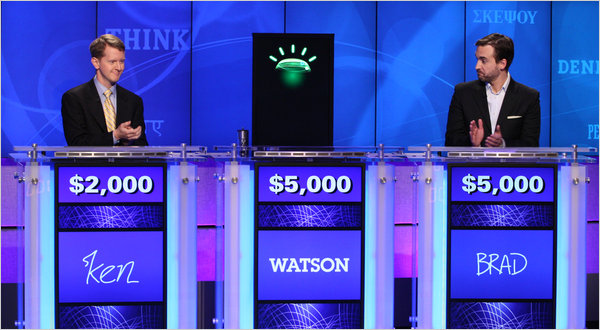
by Admin | Feb 12, 2021 | Chronicles, News
This week in The History of AI at AIWS.net – IBM “Watson” machine defeats 2 human Jeopardy! champions. The machine went on the show on February 16th, 2011 and faced off against Ken Jennings and Brad Rutter, previous winners of the famous game-show.
The show was taped in Janaury of 2011 but was not aired until February of the same year. Instead of a regular episode, this showdown was played out over three parts, concluding on February 16th. It was filmed at one of IBM’s research lab. More than just a publicity and PR display, it was a vindication of the progress Artificial Intelligence has made in the past decades.
“Watson” is a question-answering computer system, developed by IBM as a part of their DeepQA project. David Ferrucci, an American biologist and computer scientist, headed the development of Watson as principle investigator with a research team. Watson is named after IBM’s founder and first leader, Thomas J. Watson. After its success on Jeopardy, Watson was first utilised in helping lung cancer treatment at the Memorial Sloan Kettering Cancer Center in New York City.
The New York Times covered this event on its website. The article can be read here. A clip of Watson’s victory can be viewed here.
The HAI initative considers this an important development in the history of AI due to its publicity and notability as the culmination of a research project in artificial intelligence.

by Admin | Feb 7, 2021 | News
On January 31, 2021, Mr. Nguyen Anh Tuan, Director of Michael Dukakis Institute visited NovaWorld Phan Thiet and discussed with NovaWorld Phan Thiet leaders about building a branch of Michael Dukakis Institute and the History of AI House at NovaWorld Phan Thiet.
This is a part of cooperation between AIWS City and NovaWorld Phan Thiet.
The History of AI House is a part of AIWS City, will be located at ocean view with modern and smart infrastructure, combined with natural beauty.
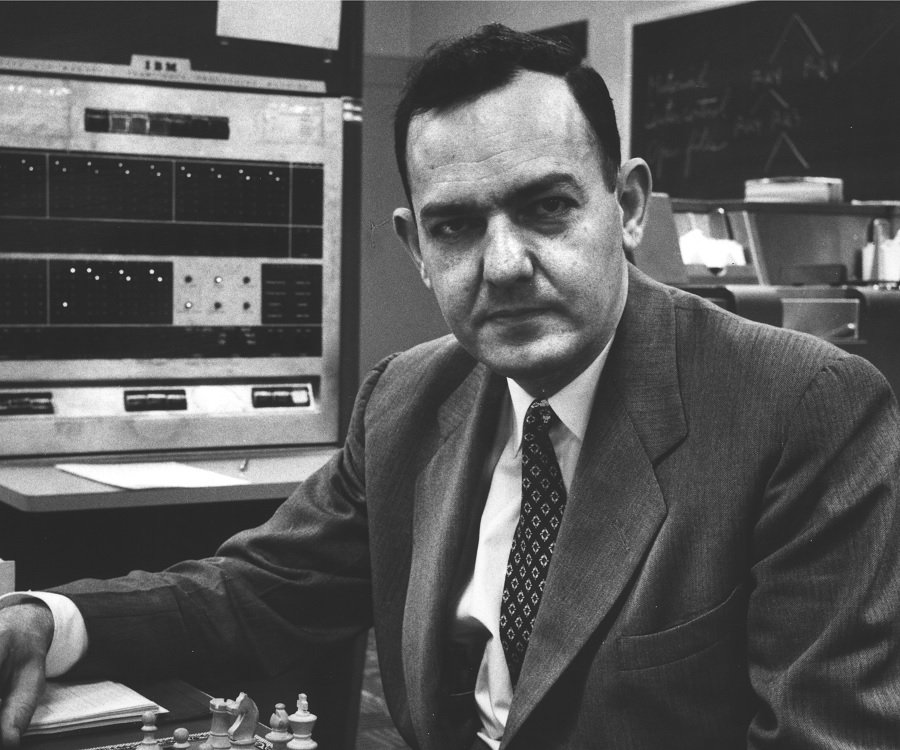
by Admin | Feb 5, 2021 | Chronicles, News
This week in The History of AI at AIWS.net – H. A. Simon was quoted with a prediction, “machines will be capable, within twenty years, of doing any work a man can do” in the 1960s. He wrote this in his “The New Science of Management Decision”
Herbert Simon was an American economist, political scientist, and cognitive scientist. In addition to Logic Theorist, he was known for research into decision-making in organisations and theories of bound rationality and satisficing. He worked at Carnegie Mellon University for the majority of his career. Simon received the Nobel Prize in Economics in 1978, and the Turing Award in 1975 for contributions to AI, human cognition, and list processing.
His prediction was stated in his work in the 60s, after the bloom of AI development in the advent of the Dartmouth Conference. Optimism was running high, and advocates and academics for AI envisioned a romantic vision of what it could be. However, his prediction did not come to fruition, as AI development suffered stagnations and the like.
This quote was an event in the history of AI due to its display of the sentiments of optimism of the time. Herbert Simon is also a notable found father of AI. His quotation is still deliberated about to this day
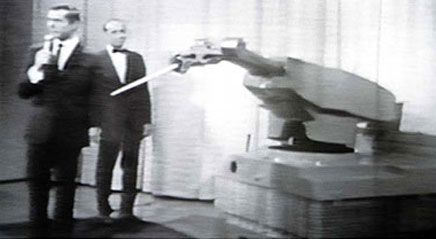
by Admin | Jan 29, 2021 | Chronicles, News
This week in The History of AI at AIWS.net – Unimate, an industrial robot developed in the 50s, becomes the first to work in New Jersey in 1961.
Unimate was invented by George Davol, who filed the patent in 1954. Davol met Joseph Engelberger in 1956, and the two paired up to found Unimation, the first robot manufacturing company. Davol and Engelberger promoted Unimate at The Tonight Show. Engelberger then exported industrial robotics to outside the US as well.
The Unimate worked at a General Motors assembly line at the Inland Fisher Guide Plant in New Jersey. The robot transported die castings from asssembly lines and welded parts on autos. It did this job because it was considered dangerous for human workers, due workplace hazards such as toxic fumes. The robot had the appearance of a box connected to an arm, with systematic tasks stored in a drum memory.
Although this machine was not directly connected to Artificial Intelligence, it was a precursor to developments in that field. By implementing a robot that can do tasks, this project was taking the first steps towards AI. Thus, the HAI initiatve considers this a milestone in the History of AI
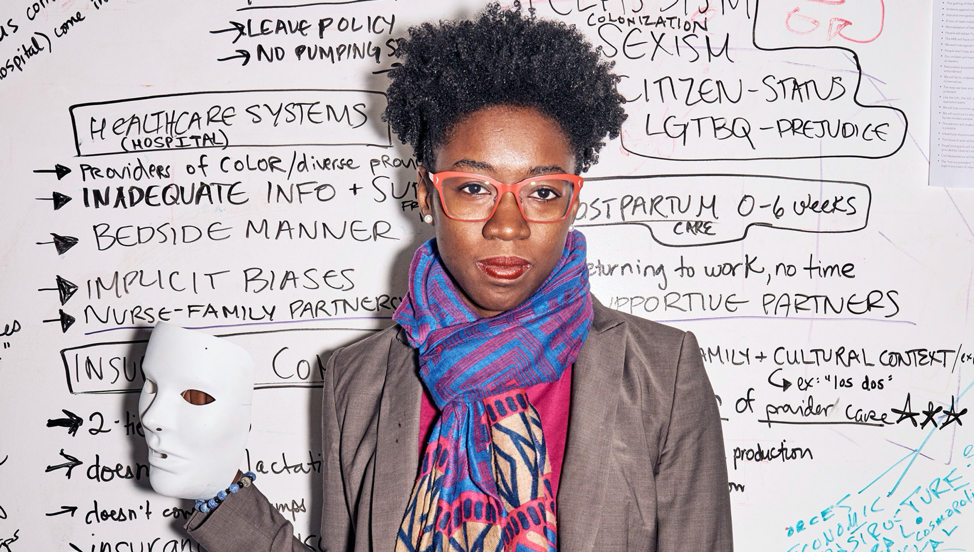
by Admin | Jan 24, 2021 | News
Joy Adowaa Buolamwini is a Ghanaian-American computer scientist and digital activist based at the MIT Media Lab. She founded the Algorithmic Justice League, an organisation that looks to challenge bias in decision making software.
In 2020, Buolamwini was on the front lines of campaigns in the United States and around the world to stop bias in AI systems. Her research helped persuade Amazon, IBM, and Microsoft to put a hold on facial recognition technology. Her 2020 TED Talk on algorithmic bias has over 1 million views. She was featured in the documentary film Coded Bias that premiered at
the 2020 Sundance Film Festival, that explores how algorithms encode and propagate bias.
Joy Buolamwini has testified before Congress about the dangers of facial recognition and she has called for a complete ban of police use of face surveillance. Her MIT thesis uncovered large racial and gender bias in AI services. Her research has been covered in over 40 countries, and as a renowned international speaker she has championed the need for algorithmic justice at the World Economic Forum and the United Nations. She serves on the Global Tech Panel convened by the vice president of European Commission to advise world leaders and technology executives on ways to reduce the harms of A.I.
As a creative science communicator, she has written op-eds on the impact of artificial intelligence for publications such as TIME Magazine and New York Times. Her spoken word visual audit “AI, Ain’t I A Woman?” shows AI failures on the faces of iconic women like Oprah Winfrey, Michelle Obama, and Serena Williams as well as the Coded Gaze short have been part of exhibitions ranging from the Museum of Fine Arts, Boston to the Barbican Centre, UK.
A Rhodes Scholar and Fulbright Fellow, she holds two master degrees from Oxford University and MIT; and a bachelor’s degree in Computer Science from the Georgia Institute of Technology. Fortune Magazine named her to their 2019 list of world’s greatest leaders describing her as “the conscience of the A.I. Revolution.”
A brilliant researcher, a highly effective advocate, a creative communicator, Joy Boulamwini should be recognized for HAI 2020.
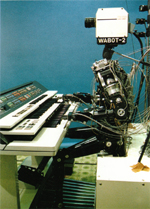
by Admin | Jan 22, 2021 | Chronicles, News
This week in The History of AI at AIWS.net – Waseda University built WABOT-2 in 1984. A follow up to the WABOT-1 they built in 1973, this robot was also anthropomorphic, but improvements were made.
The WABOT-2 was a follow-up to the WABOT-1 project. This iteration can now play music of average difficulty on an electronic organ. It was now able to converse with another person as well. In addition, it now has a camera for its head. A contrast with WABOT-1 is that WABOT-2 is considered a “specialist robot” instead of a “versatile robot”.
After the success of WABOT-1 in 1973, Waseda University picked the project back up in 1980. The project developed by a study group at the School of Science & Engineering. The goal of this project was to create an anthropomorphic robot that could perform intelligent tasks such as performing music. Thus, WABOT-2 became more specialised, rather than the versatility of WABOT-1
Similar to the WABOT-1, WABOT-2 was mainly a robotic project. Still, the WABOT-2 helped develop AI in improving the WABOT’s ability to conversate. The HAI initiative considers this an event, as with the first one, in the History of AI due to its contributions to the development of AI.
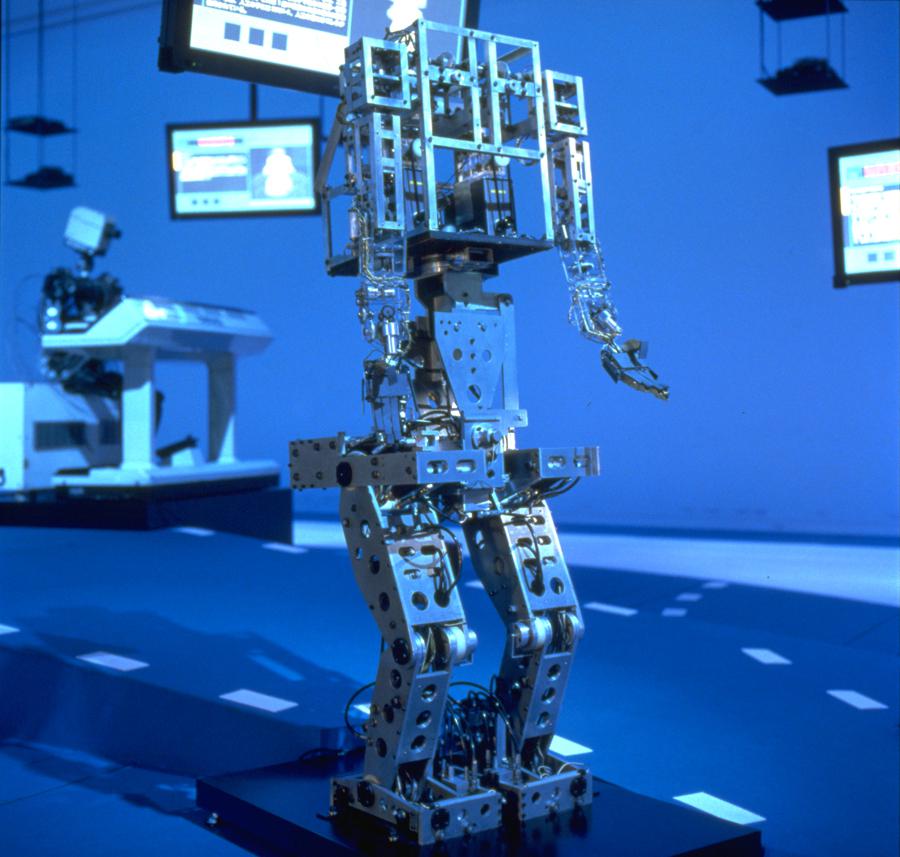
by Admin | Jan 15, 2021 | Chronicles, News
This week in The History of AI at AIWS.net – Waseda University built WABOT-1 in 1973. It was the first full-scale anthropomorphic robot, with a climb-control system, a vision system, and a conversation system.
The WABOT-1 was the first of its kind. It was able to communicate with a person in Japanese, as well as measure distance and direction. WABOT (WAseda roBOT) was able to walk and grab objects. It had the mental faculty of a one-and-a-half-year-old child. The robot had the WAM-4 for its hands, and the WL-5 for its legs.
The WABOT project was initiatived at Waseda University in Tokyo, Japan in 1967. Development did not fully start until 1970, and was not finished until 1973. The project was under the direction of Ichiro Kato at the School of Science & Engineering. In the 80s, Waseda University would reiterate its works on WABOT-1 with a new robot, the WABOT-2.
While the WABOT-1 was a mainly robotic project, its conversation system creates for it an important connection to the field of AI. The HAI initiative considers this an event in the History of AI due to its contributions to the development of AI.









